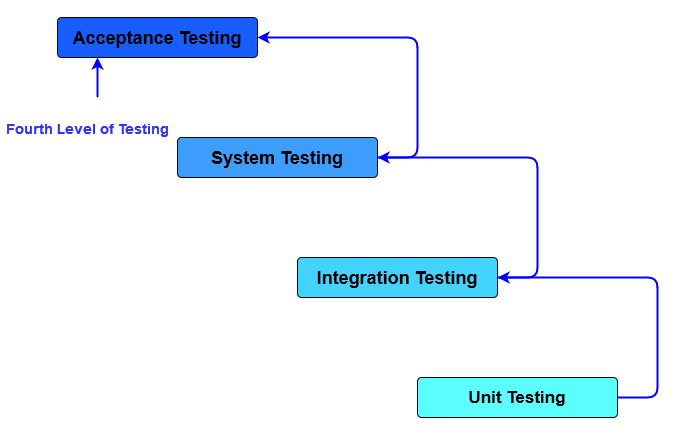| Usama Ashraf

What is Acceptance Testing?
Acceptance testing is a type of software testing which is performed to validate either software system met requirements specifications of client. The main purpose of this testing is to make sure all functionalities are working according to the requirements. Acceptance testing usually done in the final phase of testing after performed the functional, Integration and System testing. In the Acceptance testing we can easily identified the user experience regarding the application or the software. Usually End users or the clients performed this testing to ensure all functional requirements.
Types of Acceptance Testing:
There are four main types of Acceptance testing:
- User Acceptance Testing
- Alpha Testing
- Beta Testing
- Business Acceptance Testing
What is User Acceptance Testing?
User Acceptance Testing usually performed by the end users or clients to verify the software system before deploying the solution into production environment. In this testing testers or end users can easily identify the behavior of the system according to user perspective and catch out all existing errors related to UI or functionality of the system. It is usually done in the final phase of software testing.
Purpose of UAT:
The basic purpose of performing UAT is to validate all end to end business process flows. Identify that all business rules are working fine. It does not focus on cosmetic errors, spelling mistakes or system testing. For UAT there is a separate environment required with separate Database like production setup. It is also a Black box testing type in which two or more than two end users are involved.
Who Performs UAT?
- End Users
- Clients
Need of UAT:
Need of User Acceptance Testing arises when Unit, Integration and System testing completed because developers implement application or software according to documented requirements. After completed and verified the documented requirements few more things that need to be worked according to user experience or give easiness to the user. Further changing in requirements during the development that’s why we need to perform User Acceptance Testing on final phase of the product or project.
- Developers code software or application based on given requirements from client in documented form which is their “own” understanding of the requirements and may not actually be what the client needs from the software.
- Requirements changes during the implementation or development of the project may not be communicated effectively to the developers, that’s why we need to perform UAT in final phase of the product or project
Pre-requisite of User Acceptance Testing
OR
Entry Criteria of User Acceptance Testing:
- All Business requirements should be available
- Application or Software should be fully developed
- Unit, Integration and System testing performed
- All Test cases must be executed earlier
- Only Cosmetic or UI errors are acceptable
- Regression Testing must be completed
- Bugs should be fixed before give build to the UAT environment
- UAT environment must be ready
- No high priority bugs exist on UAT environment
- No functional bug occur on UAT if it was resolved on developers environment
Exit Criteria of User Acceptance Testing:
- No critical bugs found
- All business processes are working fine on UAT
- No major functional bugs identify
- All requirements must be fulfilled according to given requirements and User experience behavior
How to Start User Acceptance testing:
UAT is done mainly by the intended users of the system or software. Normally it is done on Client site which is known as beta testing. But sometime our internal staff performed UAT to verify all bug fixes and functional requirements. Once UAT environment is setup then following tasks should be implemented and will do step by step:
- Analysis of business requirements
- Creation of UAT Test Plan
- Identify Test Scenarios
- Create UAT Test Cases
- Prepare test data for executing test cases
- Run the Test cases
- Record the result and generate report
- Confirm Business objectives or requirements
We will discuss more about Acceptance Testing types and other details in next part of Blog..
Join us next time, as we continue our journey of learning canvas apps.Click here to learn more about Imperium's Power Apps Services. We hope this information was useful, and we look forward to sharing more insights into the Power Platform world.

